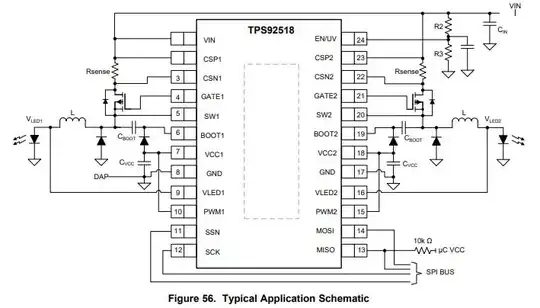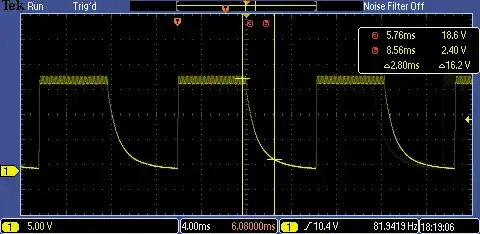I designed a pcb with the following dual led circuit based around the TPS92518:

I would like to turn on and off the Powerleds in the <1ms range.
At the moment our camera stills sees the leds a bit glowing.
When I measure on the scope, my output shows a very slow off time curve.

How do I get a sharper edge? I played around with changing Cboot values, but higher then 100nF doesn't have a positive effect.
Can it be the N-MOSFET? PSMN019-100YL Total gate charge is 72.4 nC